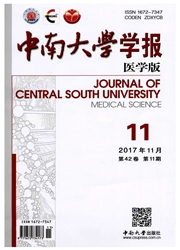

 中文摘要:
中文摘要:
目的:研究西藏藏族人群15个短串联重复序列(short tandem repeats,STRs)位点(D8S1179,D21S11,D7S820,CSF1PO,D3S1358,TH01,D13S317,D16S539,D2S1338,D19S433,vWA,TPOX,D18S51,D5S818,FGA)的多态性分布及群体遗传学和法医学应用价值。并分析它们与西藏其他民族及其他亚洲人群间的遗传学关系。方法:采用ABI3100遗传分析仪检测STRs基因多态性,用ARLEQUIN 3.1软件计算等位基因频率和各种多态性参数。并将其结果与文献报道的其他亚洲人群的STRs结果进行比对,DISPAN软件计算遗传距离(DA)、基因分化系数(Gst)和杂合度(Ht),MEGA4.0软件绘制进化树,SPSS14.0进行多维量表法(MDS)分析。结果:藏族群体中共检出132种等位基因,频率分布0.0050-0.5990;杂合度、个体识别力、多态性信息量等群体遗传学指标分析显示,15个STRs位点具有中度或高度多态性,中国藏族群体具有较独立的遗传结构。结论:所选择的15个STRs位点具有较高的个体识别力和多态性信息量,可用于群体遗传学和法医学研究。
 英文摘要:
英文摘要:
Objective To determine the genetic diversity of short tandem repeats ( STRs ) loci (D8S1179, D21S11, D7S820, CSFIPO, D3S1358, TH01, D13S317, D16S539, D2S1338, D19S433, vWA; TPOX, D18S51, D5S818, and FGA ) , and to evaluate the genetic structure of Tibetan nationality and its affinity with other Tibetans (Changdu Tibetan, Luoba ethnic group, Deng population ) and other Asian populations. Methods Fifteen STRs loci were amplified simultaneously using a multiplex PCR typing system. Amplified STR fragments were analyzed with an ABI PRISM 3100 Avant DNA Analyzer. Arlequin software version 3. 1 was used to obtain allele frequencies and polymorphism parameters. The genetic distance ( DA ) , coefficient of gene differentiation (Gst) values, and heterozygosity (Ht) were estimated using DISPAN. A phylogenetic tree from the allele frequency data at 8 STRs loci and 15 STRs loci obtained from the literature reported previously by using the DA and Neighbor-Joining (N-J) method was constructed using MEGA Version 4. 0. Multidimensional scaling ( MDS ) analysis was performed using the SPSS 14.0 software package. Results We got 132 alleles in the population -studied, with the frequency of 0. 0050 - 0. 5990. Ht, the power of discrimination ( DP ) and the polymorphism information content ( PIC ) were consistent with the forensic application. Cluster analysis and phylogenic trees revealed that Tibetan nationality had estrangement genetic affinity with other Chinese nationalities and Asian population. Conclusion The genetic information demonstrates that the 15 chosen gene makers are highly informative loci and are suitable for population genetic research and forensic application.
 同期刊论文项目
同期刊论文项目
 同项目期刊论文
同项目期刊论文
 期刊信息
期刊信息
